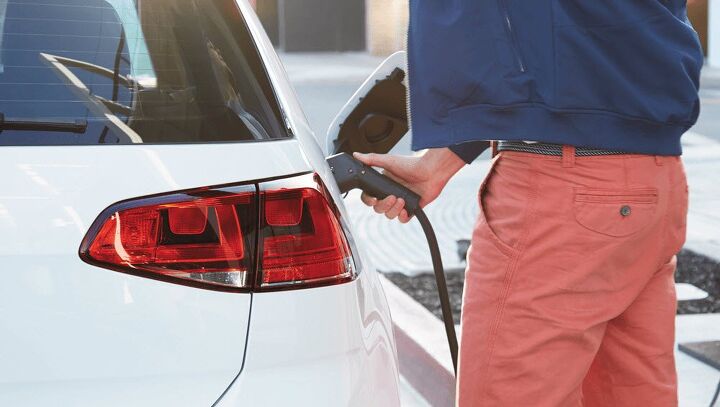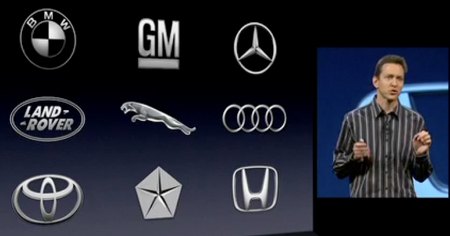#oems
Revenge of the Nerds: OEMs Pay Hackers Less Than Most Other Industries
Most readers will remember Dennis Nedry from the first Jurassic Park movie, a computer subcontractor who brought down the entire park for numerous reasons – most of which had to do with money. In other words, John Hammond seemed to have “spared no expense” except for Nedry's services, and therefore Nedry ruined the entire project.
A new report suggests that some car companies may be acting in a similar manner – at least when it comes to the amount of cash they’re paying computer experts to find bugs in their code.
Consumer Advocacy Group Demands Driving Data Be Controlled by Drivers
The Global Alliance for Vehicle Data Access (GAVDA) has issued a letter to automotive manufacturers around the world to request consumers be given direct access to the data generated by the vehicles they drive. While the group is comprised of organizations representing rental agencies, car sharing, independent vehicle repair shops that also want access to the information, it’s likewise backed by several consumer advocacy groups that worry customers and small businesses are being taken advantage of.
At the core of the letter is a refutation of claims made in a June 3rd memo the Alliance for Automotive Innovation (AAI) sent to Congress. That group is an assemblage of the world’s largest industry players with an aim to monetize driving data as quickly as possible. It just so happens that the duo are diametrically opposed to how the government should handle user information.
The Hero We Need: Consumer Access to Repair Coalition
When it comes to activism, it’s best to choose your battles carefully. Fortunately, there aren’t too many causes within the auto industry and most are easy to get behind.
Even though environmental activists sometimes find themselves at odds with reality, their hearts are usually the right place, and they’ve encouraged automakers to try new and interesting things with transportation. Safety advocates can likewise go overboard, but we wouldn’t have seen cars get dramatically safer (or heavier) since the 1970s if they hadn’t.
Our favorite has to be consumer advocacy, however. With the exception of the occasional predatory lawsuit looking to take advantage of a dumb corporate decision, there’s precious little to scoff about. It also tends to overlap with our pet peeves by decrying bad business practices within the industry. Case in point, the Consumer Access to Repair Coalition has recently asked Congress to rethink how vehicular data is shared — noting that automakers shouldn’t need real-time monitoring for repairs and that the technology likely poses an unnecessary security risk.
States Begin Dealing With Driving Data, Right-to-Repair Laws
In reading this website, you’ve no doubt come across paranoid rants about automotive companies vacuuming up your personal data as connected cars become the norm — often written by yours truly. Frequently bleak, they address a multitude of concerns we believe will only get worse before they can get better.
A large part of that has to do with automakers seeing the potential of leveraging customer data, like so many tech companies have before them. But elected (and unelected) officials also seem to have a loose grasp of the technology and its potential ramifications. When the Department of Transportation initially approved self-driving vehicles for public testing, the guidelines were loose and largely dependent upon self-reporting — few wanted to stand in the way of developing systems that might someday save lives.
However, manufacturers are now beginning to issue over-the-air updates, perpetual internet connectivity, gamification, and in-car marketplaces (complete with advertisements). While the new technology has opened up new doors for customer experiences and corporate revenue, it’s accelerating at a pace that’s difficult to track. As a result, lawmakers in Massachusetts and California are starting to get antsy. The former hopes to address how data will be handled in accordance with the state’s right-to-repair laws. The latter is more directly concerned with privacy.
Automakers Formally Take Aim at California's Zero-emission Vehicle Mandate
Compared to the rest of the United States, California is on the bleeding edge of government-appointed environmentalism. When the Trump administration suggested reexamining Obama-era fuel economy and emissions standards, The Golden State was the first to complain, saying it would not be adjusting its goals just because the rest of the country may. It also has pretty serious mandate on zero-emission vehicles — one that forces 15 percent of all new vehicles sold in the state to use zero-emission powertrains by 2025.
While California isn’t alone — nine other states have followed its lead since Trump took office — it is the keystone star on America’s flag pushing to maintain expand fuel regulations. Automakers have noticed and, despite previously having agreed with President Obama’s emission standards several years back, they’re launching a counter-offensive.
Arguing before a U.S. House panel, the Association of Global Automakers complained that California’s ZEV mandate threatens a single national standard for fuel economy.
Rearview Mirrors Might Evolve in a Few Years
Rearview mirrors haven’t enjoyed the same renaissance as other portions of the automobile. When the mirrors began appearing on cars roughly a century ago, wheels had wooden or wire spokes and were wrapped in organically sourced bias-ply rubber. Despite still being round, modern wheels are vastly different from their more-venerable counterparts but mirrors are not.
That might change in a few years. While some automakers have already affixed parking camera displays into the polished reflective centerpiece, like Ford, two manufactures have recently replaced traditional mirrors will full-time video feed. Nissan has one available for the Japanese market and General Motors introduced the Gentex “Full Display Mirror™” on the Cadillac CT6 and XT5 at 2016’s Consumer Electronics trade show.
While our gut-reaction is to contemplate how much more expensive a free-hanging LCD screen would be to replace than a simple mirror, this could be the general direction for a tech-focused industry. In fact, IHS Markit is already positive it’s only a matter of time.
Suppliers Scramble to Furnish Sophisticated Interiors (and Predict the Future)
You might not have noticed, but car interiors are growing increasingly more complex — not just in how they incorporate technology but also in the materials used. While the 1990s were awash in gray or beige plastics and upholstery, today’s vehicles source furnishings from a vastly broader palate.
Hyundai’s Ioniq is a prime example. In addition to using recycled plastics, it also uses bio-fabrics for the headliner and carpeting. Hyundai has also touted the use of sugarcane as a component for the interior’s soft-touch materials, while powdered wood and volcanic ash hides in harder surfaces.
OEMs are always trying to provide customers with something they can’t get elsewhere. More colors, different trim pieces, eco-friendly materials, and little embellishments that could be the deciding factor. Higher-trimmed vehicles from 2o years ago were primarily set apart by their upgraded mechanical components, adjustable seats, and superior electronics. With today’s vehicles already so well appointed, manufacturers are implementing custom stitching, chrome accents, and decorative lighting on a mass scale to inform occupants, “This is not a base model!”
It’s great news for consumers, but suppliers are scrambling to predict what automakers and their buyers will want next.
QOTD: Do We Really Need So Many Car Blogs?
I don’t get invited to many press events, but when I do, I often find myself surrounded by people wearing Hawaiian shirts, khakis, and black shoes. And that’s not even the weird part.
The last event I attended I was representing a blog that rhymes with “La Hop Stick.” This made me a virtual magnet for every forever-alone-Dockers-wearer in attendance, all of whom were nearly twenty years older than I, and all of whom wanted to tell me all about their blogs, which were ususally named something like “MOTORSANDROTORS.TV” and had audiences of approximately fourteen uniques a month. Despite the fact that neither you nor I, nor anybody not sharing a blood relation with these people had ever heard of any of these guys, they all get invited to all of the press events.
“Oh, yeah, I haven’t even been home in weeks,” I heard one humble-complaining, despite the fact that he was dressed like a flood victim and was eating in a four-star restaurant. “Just one event after another.” I assumed that he represented Motor Trend, or perhaps Automobile, since his presence at these events was so desperately desired by the OEMs. Not so much. I would link his blog here except that I fear I would crash his site if one out of every hundred readers here were to click on it.
Why does this happen? For a reason that serves both the OEM and the blogger well, but hoses anybody in search of the Truth.
Atlanta Grows Into Role As Automotive Industry Hub
As Mercedes-Benz USA prepares for its two-year move from New Jersey to Atlanta, the question is how the city scored this win in the first place. Turns out Atlanta is pushing its own brand as that of an automotive industry hub for the Southeastern United States.
Apple, OEMs, Not On The Same Page With Siri
A Fast Company article on in-car integration of Siri, Apple’s voice activated Artifical Intelligence system, revealed that despite Apple’s usage of their brands, a few manufacturers aren’t even aware of plans to use it on their vehicles, let alone within the 12 month timeframe that Apple had suggested.
























Recent Comments